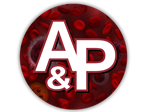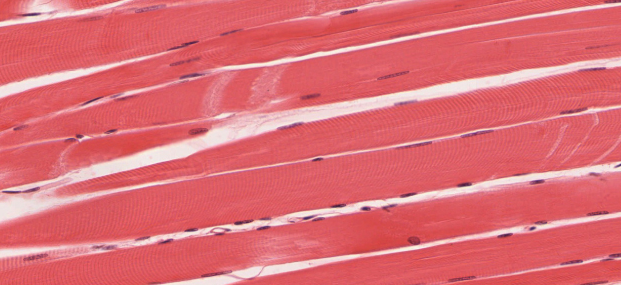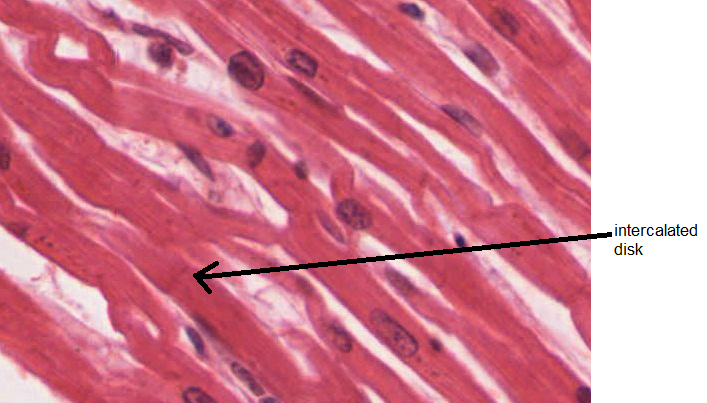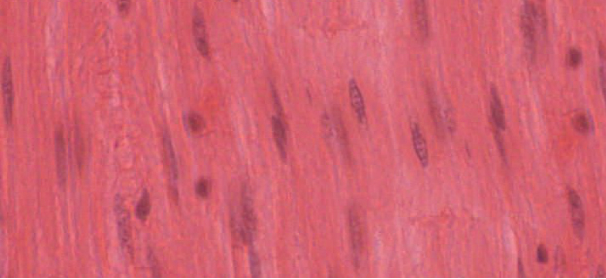| Type of Muscle | Histology | Location | Structure | Function | Control |
|---|---|---|---|---|---|
|
Skeletal |
|
Attached to the skeleton |
Striated and Multinucleated |
Locomotion, thermogenesis, support the body, and move lymph through vessels.
|
Voluntary |
|
Cardiac |
|
Heart |
Striated, branching cells with only one nucleus, cells are connected at intercalated discs.
|
Pump blood through circulatory system
|
Involuntary |
|
Smooth |
|
Widely distributed: inside hollow organs, attached to hair follicles, etc. |
Homogenous in appearance, small cells with only one nucleus. |
Function depends on muscle location |
Involuntary |
All Muscle Cells have a Sarcolemma
Although there are marked differences between all 3 types of muscle tissue, there are some properties that they share. First and foremost muscle cells, like all cells we have previously studied, are contained by a cell membrane. The cell membrane, or sarcolemma, serves as a barrier to distinguish what is outside versus what is inside the cell. Inside the cell many proteins, mitochondria, DNA, and RNA are contained, all of which have a negative charge. There is also potassium (K+) inside the cell but not enough to overcome the negative charge of the much larger and more common molecules. Therefore, the inside portion of the cell membrane bi-layer is negatively charged. Outside of the cell there are numerous cations such as calcium (Ca2+) and sodium (Na+) that confer a positive charge to the outside portion of the cell membrane bi-layer. This means that there is a difference of charge across the cell membrane since the inside portion is negative and the outside portion is positive. The transmembrane charge difference means that the membrane is said to be polarized. This polarization is furthered by the presence of sodium potassium pumps (Na+K+ ATPase) in the membrane which unequally distributes cations. Remember, this particular pump transports 3 positively charged sodium ions out of the cell and only 2 positively charged potassium ions into the cell. With each turn of the pump the inside of the cell loses 1 positive charge (3 out - 2 in = 1 less positive charge inside the cell than it started with); thereby reinforcing the polarization of the membrane.
![]()
![]()
Animation 1. View the Sodium Potassium Pump animation on YouTube (opens in new window). Note not only the direction of the ion movement, but how each turn of the pump makes the inside of the cell progressively more negatively charged.




